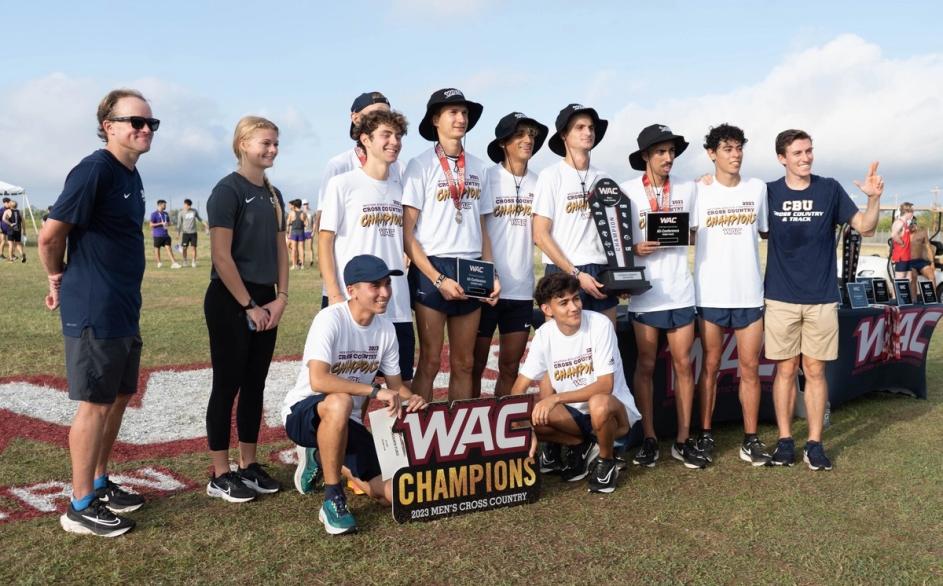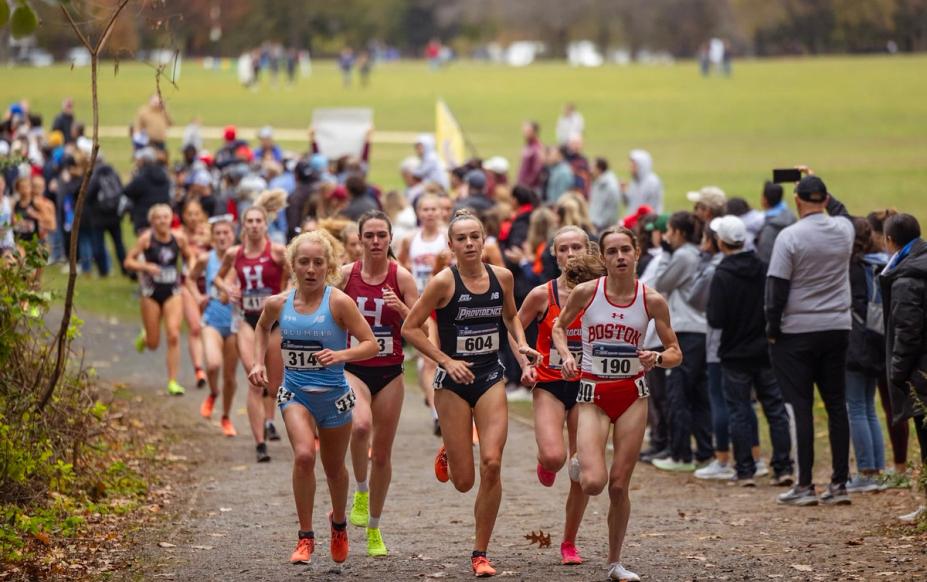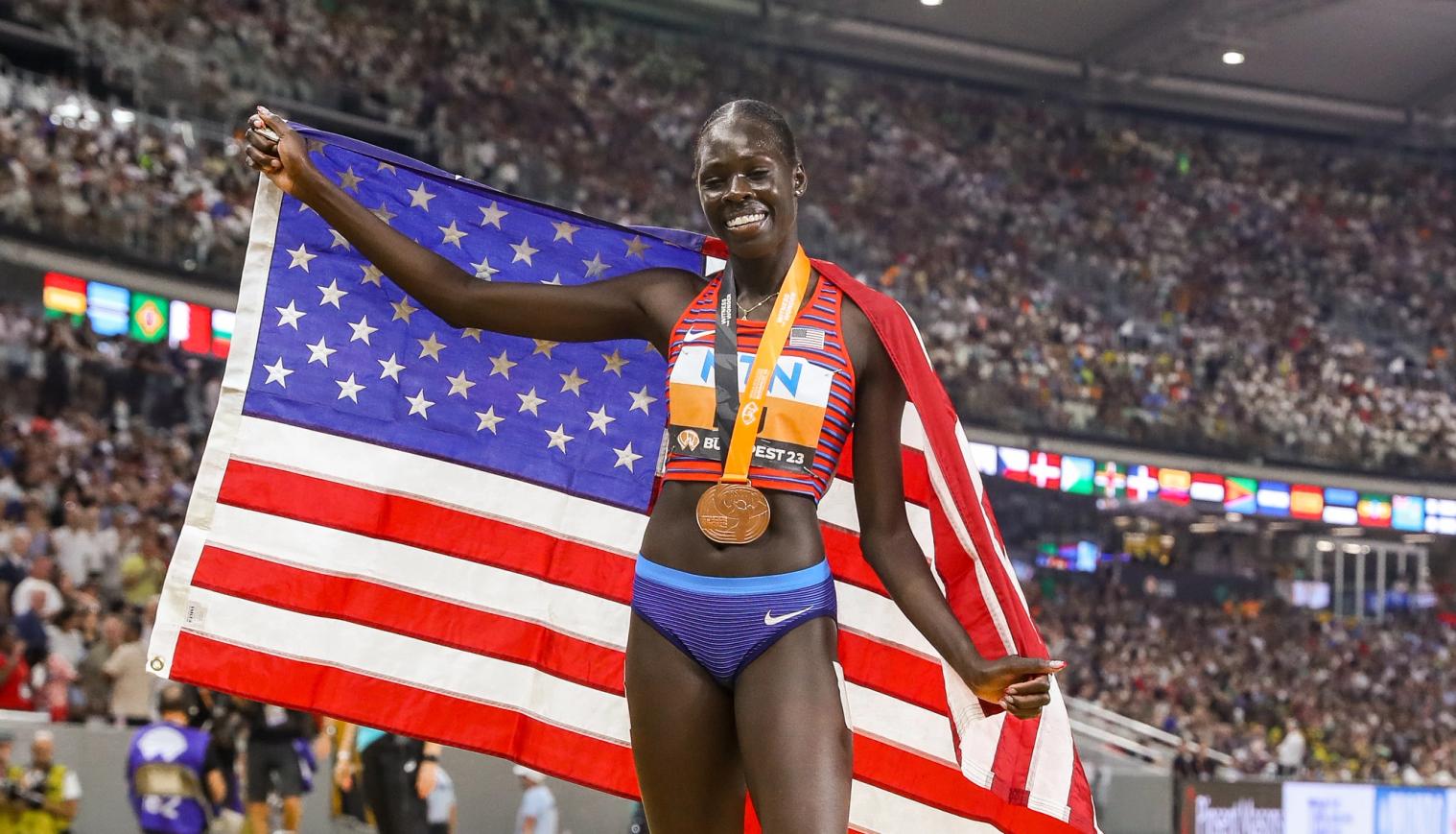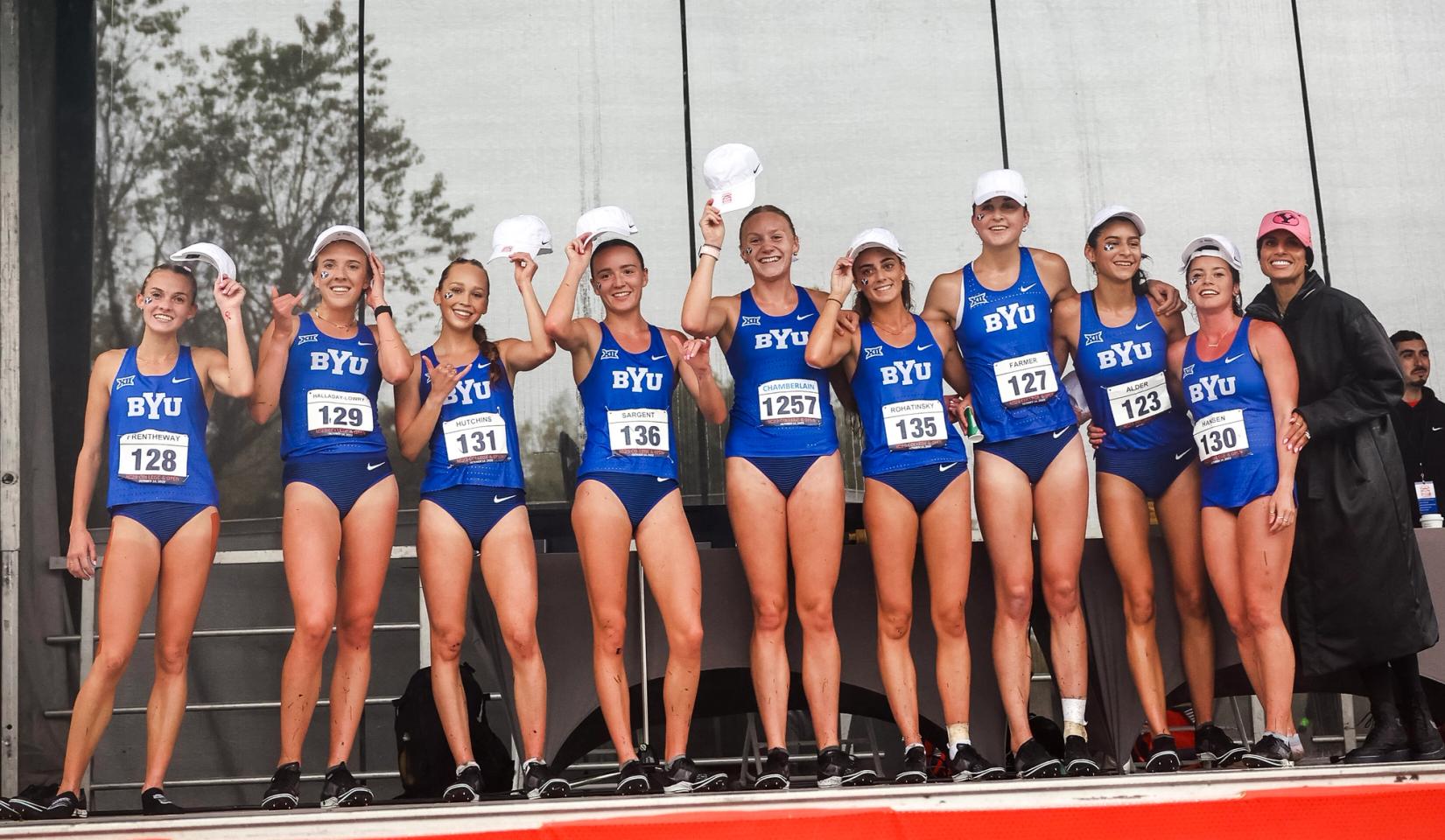By Kyle Merber
November 15, 2023
Five years after transitioning through the ranks to become a Division I program, the Cal Baptist University men’s cross country team has qualified for the NCAA national meet. The CBU women did it a year earlier, and qualified again this year. Both squads did so in a less traditional way than many universities: through the recruiting of international athletes.
On the surface, that’s not the most novel approach – this has been going on for generations, with certain universities and countries having long standing talent pipelines.
Take Villanova and the Irish, for instance. That started in 1949 when Jumbo Elliot became coach and brought in John Joe Barry, “The Ballingarry Hare,” as he was colloquially known according to a statue I have run by many times. (Full disclosure, I met my wife because she came from Ireland on a running scholarship to Stony Brook, so feel free to ignore all further opinions of mine on this subject if you must. Coincidentally, she also is from Ballingarry, a village of 269, but I’m pretty sure if I called Patricia the Other Ballingarry Hare I’d be sleeping on the couch.)
But CBU did its international recruiting in a much different way than we traditionally see – their top seven men are from seven different countries. And they’re not those already ubiquitous in the American system like Kenya, Australia, New Zealand, or England. The seven are from Uruguay, Latvia, Lithuania, Argentina, South Africa, Colombia, and Chile. The varsity women are also from seven different countries from each other and in total, their roster is about as diverse as the United Nations with 22 nationalities represented. Can you imagine what a team potluck must be like?

Credit to CBU Athletics
For the most part, these are not countries with powerhouse distance running histories. An 18-year-old kid being a national champion and record holder is a really cool thing to put in an Instagram bio, but it also means the opportunities to remain at home and still become the best version of your athletic self are limited. And the domino effect of those impacted could be endless. There’s no telling how many young aspiring track talents will draw inspiration from their country’s national champ finishing near the front of an NCAA meet.
There are undoubtedly critics of programs that rely heavily on international recruiting. The main argument is that these scholarships should go towards advancing and supporting American kids, but I think it’s pretty much bogus. There are 363 Division I schools with a maximum of 12.6 scholarships on the men’s side and 18 on the women’s. There are 304 more Division II programs in the NCAA. Obviously, not all are fully funded, but an American high schooler who has shown promise will have the chance to either be recruited with a scholarship offer or be able to eventually earn one as a walk-on.
There’s also this idea that recruiting internationally is somehow a shortcut to success. As if this modern version of college sports with NIL deals and instant transfers is the maxim of fairness! It completely dismisses how impressive it is to bring together so many young adults with completely different backgrounds into a cohesive team. And that doesn’t even cover the challenges athletes face in settling into a groove in a new country, likely away from home for the first time.
I had two years of conversations and college visits with the assistance of my family, friends, and guidance counselors to eventually pick a school 30 miles from where I grew up. My parents would come to all of my races and drop snacks off at my dorm when I was running low. Should it be that surprising when a person in a situation like mine has a solid freshman campaign?
Compare that to the experience of an athlete whose first time in the United States was a week before classes started and their first language is not that of their teammates. Welcome to Riverside, California – here’s your roommate assignment. Meanwhile, the Nuttycombe Invitational is in seven weeks.
There is a reason the NCAA is largely considered one of the greatest developmental systems for athletes (across all sports) in the world. It doesn’t discriminate against where the talent came from, just that it’s here. It’s not the case now, but 20 years ago the “All-American” athletes were given their certificates following the removal of non-Americans from the descending order list. The official place of where one finished in a race did not make such concessions.
There will be 41 different countries represented on the line in Charlottesville. Try to change your perception a bit when we inevitably see some international athletes running well this weekend. First off, it’s all by the book! But most importantly, what a fortunate series of events that American kids don’t have to travel to the other side of the world to be able to race the very best talent and meet people they otherwise never would have – that’s quite an unfair advantage!

Kyle Merber
After hanging up his spikes – but never his running shoes – Kyle pivoted to the media side of things, where he shares his enthusiasm, insights, and experiences with subscribers of The Lap Count newsletter, as well as viewers of CITIUS MAG live shows.




